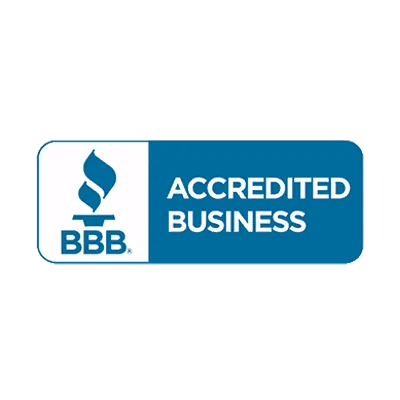Recovering
$ MILLIONS
For Injured Workers
Heat Stress Injuries Can Be Life-Threatening
Securing Maximum Compensation for Those Impacted by Work-Related Injuries
Outdoor workers who are exposed to extremely hot temperatures are at risk of developing heat stress injuries such as cramps, exhaustion, and heatstroke. Extreme heat may also exacerbate workers’ existing health conditions, contributing to potentially fatal cardiovascular diseases such as heart attacks and strokes.
In Pennsylvania, workers who are injured due to heat stress may be eligible for benefits. The experienced workers’ compensation lawyers at Larry Pitt & Associates, P.C. have proudly served workers throughout the state for more than 40 years and are dedicated to obtaining the maximum compensation possible for all types of work-related injuries.
GET A FREE CONSULTATION WITH LARRY PITT
Philadelphia Workers’ Compensation Lawyers at Larry Pitt & Associates, P.C. Help Pennsylvania Workers Obtain Benefits for Heat Stress Injuries
If you developed a heat stress injury as a result of being exposed to extreme heat in the workplace, contact a Philadelphia workers’ compensation lawyer at Larry Pitt & Associates, P.C. We provide skilled, comprehensive legal representation for workers in Philadelphia and throughout the state. To discuss your case, please complete our online contact form or call us at 888-PITT-LAW to arrange a free consultation.
Types of Heat-Related Illnesses
Workers may suffer a variety of heat-related illnesses ranging in severity. The Centers for Disease Control and Prevention (CDC) provides a list of warning signs for the most common heat-related illnesses, including:
- Heat cramps – Workers who perform strenuous labor are at highest risk for heat cramps, which develop when salt and moisture levels are diminished due to excessive sweating. Symptoms include muscle pain and spasms.
- Heat exhaustion – When workers sweat excessively and lose too much water and salt, they may suffer heat exhaustion. Signs of heat exhaustion include headache, nausea, dizziness, weakness, excessive thirst, and elevated body temperature.
- Heat rash – A heat rash may develop when a worker’s skin becomes irritated by sweat during hot, humid weather. Heat rash symptoms include small, red blisters on the skin.
- Heatstroke – This is the most serious heat-related illness, according to the CDC. It occurs when the body’s temperature rises rapidly, often causing permanent disability or death. Symptoms include high body temperature (103 °F or higher), confusion, fast pulse, and loss of consciousness.
- Rhabdomyolysis – This syndrome occurs when muscle fibers break down and release toxins into the bloodstream. Causes of rhabdomyolysis include high body temperature (hyperthermia) or heat stroke and symptoms include muscle cramps, weakness, and seizures.
Preventing Heat Stress Injuries
Most heat-related illnesses are preventable. However, most employees who are injured due to heat stress are covered by the Pennsylvania Workers’ Compensation Act. If you suffered a workplace heat-related injury, contact an experienced Philadelphia workers’ compensation lawyer to discuss your legal rights and options. You may be entitled to benefits including medical expense and wage loss compensation.
Engineering Controls
According to the Occupational Safety and Health Administration (OSHA), employers can help prevent heat stress injuries and illnesses by implementing the proper engineering controls such as:
- Air conditioning
- Cooling fans
- Exhaust ventilation
- Increased ventilation/air velocity
- Insulation
- Reduced steam leaks
- Reflective shields
Work Practices
OSHA and the CDC also recommend implementing certain work practices to assist in the prevention of heat stress injuries, including:
- Allowing workers time to become acclimatized to the heat
- Encouraging workers to stay hydrated and take breaks
- Having an injury and illness prevention program (IIPP) in place
- Providing workers with adequate, easily accessible drinking water
- Providing workers with the appropriate personal protective equipment (PPE) such as insulated gloves, reflective garments, or thermally conditioned clothing
- Reducing physical demands upon workers during hot weather
- Requiring employees to conduct self-monitoring/implement a buddy system
Training
Heat stress injuries often occur due to a lack of training. It is important for supervisors to be able to recognize the causes and symptoms of heat-related illnesses and to be trained on how to handle specific hazards of the workplace. Employers should have a heat stress training program for all supervisors and workers that addresses the following:
- Acclimatization
- Heat-related illness risk factors
- How to prevent heat-related illness in the workplace
- Procedures for contacting emergency medical services if necessary
- Procedures for responding to possible illness
- Types and symptoms of heat-related illnesses
Workers’ Compensation for Heat-Related Injuries in Pennsylvania
Construction workers, farmworkers, firefighters, and landscapers are just some of the professions at high risk for heat-related injuries. Those who suffer heat-related injuries at work may be entitled to workers’ compensation. However, laws regarding the types and amounts of benefits available vary by state; therefore, it is advisable that workers contact an experienced workers’ compensation attorney in their local area.
What Our Clients Say













